
The purpose of this web page is to promote awareness of life-threatening and damaging weather hazards affecting Arizona and its residents during the North American Monsoon. Our "monsoon season" officially extends from June 15th through September 30th, the time during which associated hazards are most likely to occur.
What is the North American Monsoon?

The word monsoon is derived from the Arabic word mausim, which means season. Traders plying the waters off the Arabian and Indian coasts noted for centuries that dry northeast winds in the winter suddenly turn to the southwest during the summer bringing beneficial, yet torrential rains to the Asian subcontinent. In North America, the Monsoon impacts Arizona, New Mexico, Nevada, Utah, Colorado, Texas, California, and Mexico.
This wind shift during Monsoon season, and the dramatic change in weather it brings are all more or less driven by a similar mechanism. For much of the year, low level winds in dry subtropical regions tend to blow from the land toward the sea. However by late spring, strong solar heating causes temperatures to soar over these land areas. This intense heating causes surface air pressure to fall, forming an area of low pressure known as a thermal low. Adjacent large bodies of water are also warmed, but not as quickly. Thus, air pressures remain higher relative to the land.
 Eventually, the pressure difference increases to the point that the cooler and more humid air over the ocean is drawn toward the hot, dry air over land. This moist air moving inland eventually becomes unstable and develops into thunderstorms. Once this occurs and rain begins to fall, humidity levels increase over land, which only triggers more thunderstorms. This cycle will continue until land areas begin to cool in the early fall, and water temperatures reach their peak in early fall. This reduces the pressure difference, which in turn causes the moist onshore flow to diminish and the monsoon gradually ends.
Eventually, the pressure difference increases to the point that the cooler and more humid air over the ocean is drawn toward the hot, dry air over land. This moist air moving inland eventually becomes unstable and develops into thunderstorms. Once this occurs and rain begins to fall, humidity levels increase over land, which only triggers more thunderstorms. This cycle will continue until land areas begin to cool in the early fall, and water temperatures reach their peak in early fall. This reduces the pressure difference, which in turn causes the moist onshore flow to diminish and the monsoon gradually ends.
The North American Monsoon brings welcome rains and relief from the summer heat. For some areas, over 50% of annual rain falls during the monsoon. For Arizona, this is also the most dangerous time of the year weather-wise. Monsoon thunderstorms can cause damaging winds, torrential rainfall, frequent lightning, and dust storms. That's why it's a very good idea to review the safety tips we will be highlighting all this week.

 |
 |
 |
 |
 |

 Flash floods are the #1 thunderstorm related killer, averaging 2 to 3 deaths in Arizona each year. Most flash flood deaths occur in vehicles, and for this reason, the slogan "Turn around, don't drown!" was created. In Arizona, there are thousands of un-bridged low water crossings which flood every summer. It is very important to become familiar with these low water crossings in your area, and avoid them during heavy thunderstorm rains. In addition to avoiding these low water crossings, NEVER drive through a flooded roadway. The water depth is very easy to misjudge, and road itself may be damaged or destroyed under the water. It only takes 1 to 2 feet of water to float most vehicles, including SUVs.
Flash floods are the #1 thunderstorm related killer, averaging 2 to 3 deaths in Arizona each year. Most flash flood deaths occur in vehicles, and for this reason, the slogan "Turn around, don't drown!" was created. In Arizona, there are thousands of un-bridged low water crossings which flood every summer. It is very important to become familiar with these low water crossings in your area, and avoid them during heavy thunderstorm rains. In addition to avoiding these low water crossings, NEVER drive through a flooded roadway. The water depth is very easy to misjudge, and road itself may be damaged or destroyed under the water. It only takes 1 to 2 feet of water to float most vehicles, including SUVs.
How can I safeguard myself?
Stay informed of weather forecasts and warnings. When a Flash Flood Warning is issued, it means that a flash flood is imminent or occurring in the warned area. Be extra aware of road conditions if you are in the warned area.

If you encounter a barricade, do not drive around it. They are there for a reason, usually because flash flooding is about to take place, is already happening, or the road is damaged by flooding and is unsafe. Wait for the water to subside or find an alternate route to your destination. In some areas, you may be fined if you drive around a barricade and need to be rescued.
When outdoors, stay out of washes and stream beds during monsoon season. In addition, beware of distant thunderstorms, especially if they are over mountains. Flash flooding can occur many miles away from the thunderstorm as runoff flows into the valley and deserts.
Flash floods can occur very suddenly and at any time of day. If caught unaware by a flash flood, move to higher ground immediately. If you live in a flood-prone area, develop an evacuation and family safety plan ASAP!
 "Turn around, don't drown!"
"Turn around, don't drown!"
Every year we get pictures like these. Let's make 2018 different.
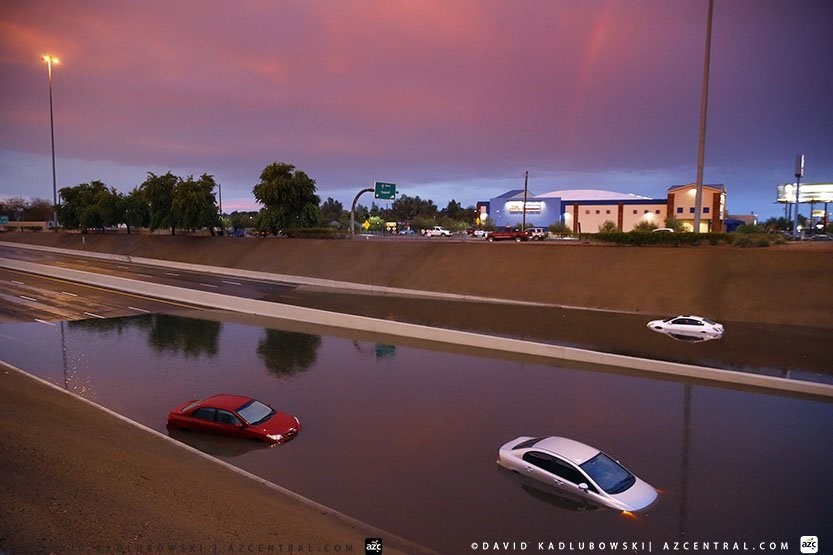 |
.jpg) |
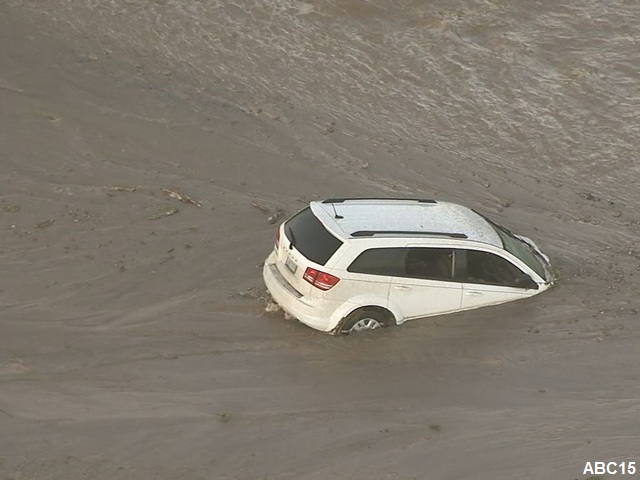 |
| (photo by David Kadlubowski/AZ Repubic) | (photo by Chief Pemberton/Cal Fire) | (photo by KNXV/ABC15) |
For more information on flash floods and flash flood safety, see:
NSSL Severe Weather 101 - Floods
Some of the most significant flash floods occur over areas that have recently experienced wildfires. Intense fire not only destroys vegetation that helps absorb heavy rainfall, but also impacts soils and creates conditions more similar to cement not allowing rainfall to infiltrate. This can lead to destructive debris flows which in some cases are more devastating than the actual fire.
If you have any questions or comments, please contact:
Ken Waters
Warning Coordination Meteorologist
2727 E Washington St
PAB 1TA
Phoenix, AZ 85034
602-275-0073
Ken.Waters@noaa.gov
Be sure to visit Weather.gov/Phoenix to access official forecasts and warnings for south central and southwest Arizona.
 |
 |
 |
 |
 |

By definition, every thunderstorm produces 1 or more bolts of lightning. This hazard kills an average of over 2 Arizona residents each year (thankfully, fatalities have been dropping); and as many as 15 are injured. Because all of us are exposed to thunderstorms during the Monsoon season, we need to know how to protect ourselves.
 How can I safeguard myself?
How can I safeguard myself?
If you hear thunder, you are close enough to a storm to be struck by lightning. It does not have to be raining to be struck by lightning. Lightning can strike up to 60 miles away from the nearest rainfall! When you hear thunder roar, go to a safe place immediately and don't forget about your pets! Stay away from open areas including porches, trees, convertible cars, and swimming pools. Any outdoor recreational activities such as golf, fishing, or hiking should be stopped immediately to find safe shelter. The safest locations are inside sturdy, enclosed buildings and hard-topped vehicles. While in your safe place, stay away from interior metallic objects that may conduct electricity during a lightning strike (wiring, piping, etc.). The idea is for metal conductors in the house walls or car body to divert the electrical charge around you and safely to ground.
How can I safeguard electronic appliances in my home?
The most reliable way to protect sensitive electronic appliances (TVs, computers, etc.) is to unplug them before thunderstorms occur. If thunderstorms have already begun, stay away from appliances and their cords since these are possible pathways for lightning's electrical charge.
Can I use my phone?
You can safely use a cell or cordless phone provided they aren't connected to their chargers/bases. Don't ever use a corded telephone during a thunderstorm; it's connected directly to metal conductors (wiring) that may bring the lightning's electrical charge your way. For more information on lightning and lightning safety, see:
http://www.lightningsafety.noaa.gov
In some cases, lightning during the first part of the monsoon season can lead to fire starts across the Southwest United States. Early season thunderstorms commonly have little rainfall and create gusty, erratic winds which can result in rapid fire spread. Historically, the largest and most devastating wildfires in the Southwest occur right as the monsoon season is beginning.
If you have any questions or comments, please contact:
Ken Waters
Warning Coordination Meteorologist
2727 E Washington St
PAB 1TA
Phoenix, AZ 85034
602-275-0073
Ken.Waters@noaa.gov
Be sure to visit Weather.gov/Phoenix to access official forecasts and warnings for south central and southwest Arizona.
 |
 |
 |
 |
 |

During the peak of the monsoon, strong thunderstorms become common across the region. These strong storms can form any time of the day, and anywhere in the Southwest. But, newly forming thunderstorms (and the strongest storms) are most common over elevated terrain areas during the afternoon hours. If conditions are favorable, these storms can send very strong outflow winds into lower terrain communities. A downburst is defined as a concentrated, severe downdraft that induces an outward burst of damaging winds at the ground. This process occurs when rain inside the downdraft area evaporates. A severe downburst can cause damage equivalent to an EF-0 or EF-1 tornado.
 |
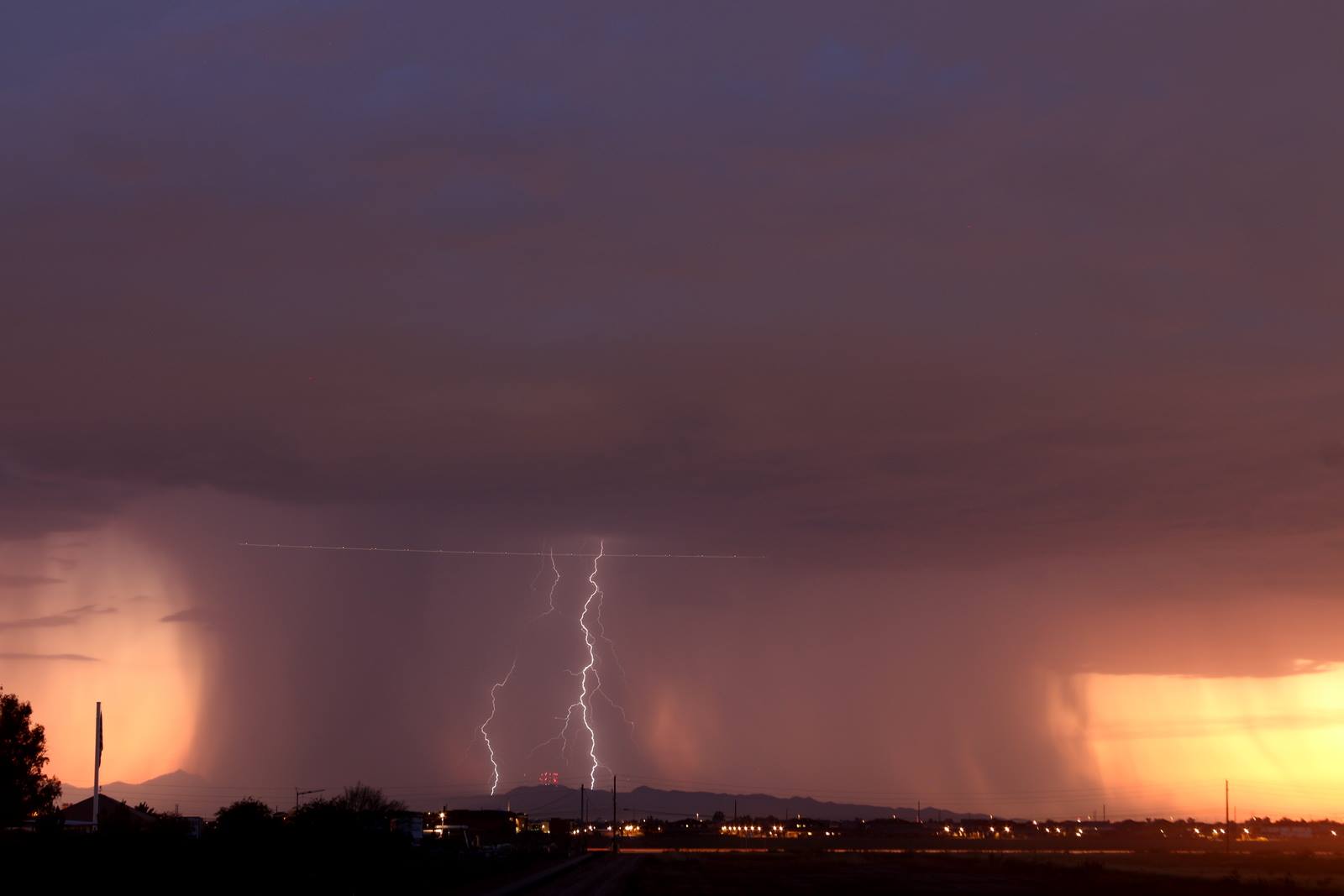 |
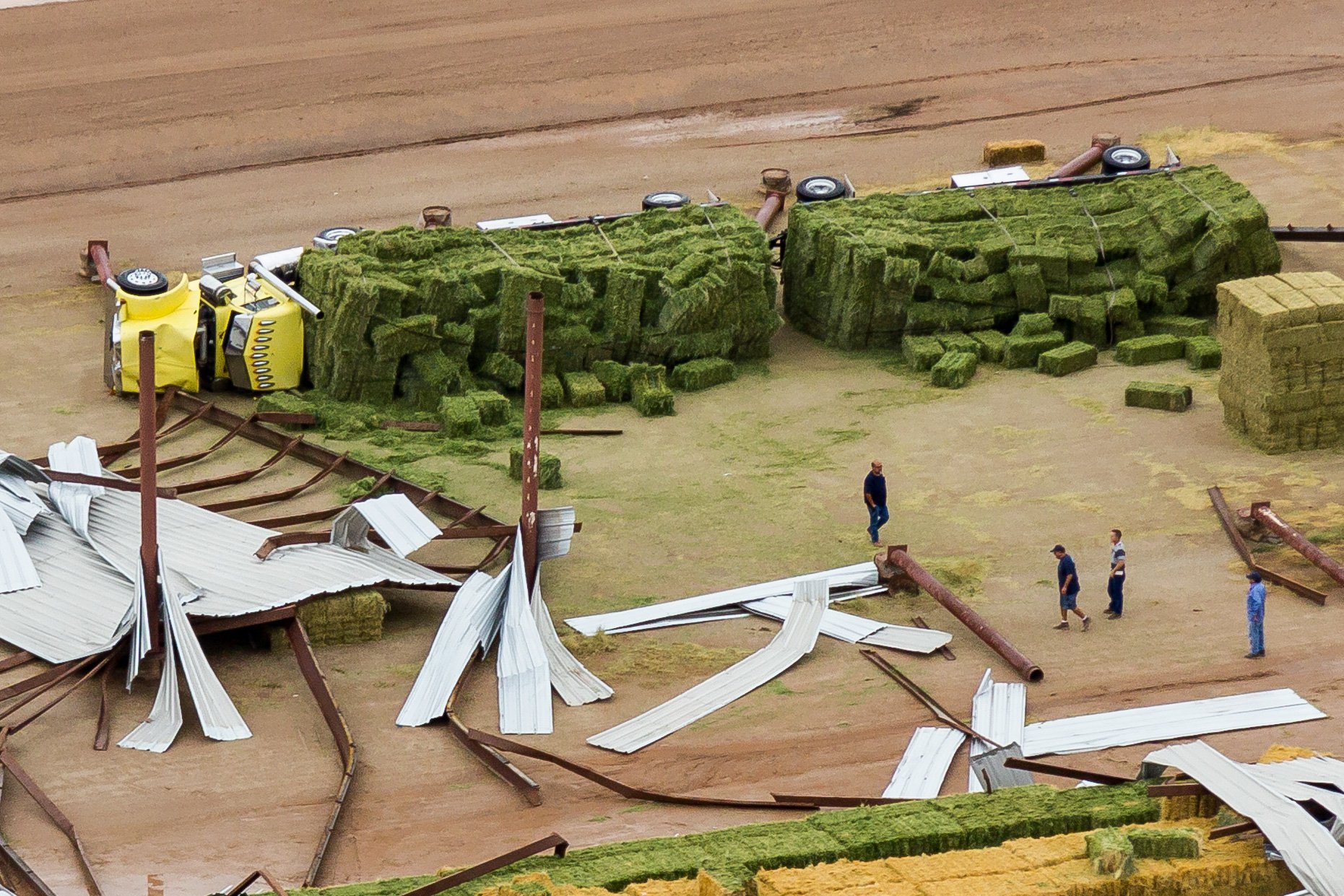 |
| (photo by Chris Birtch) | (photo by Jim Carefoot) | (photo by Jerry Ferguson/KPHO) |
 |
 |
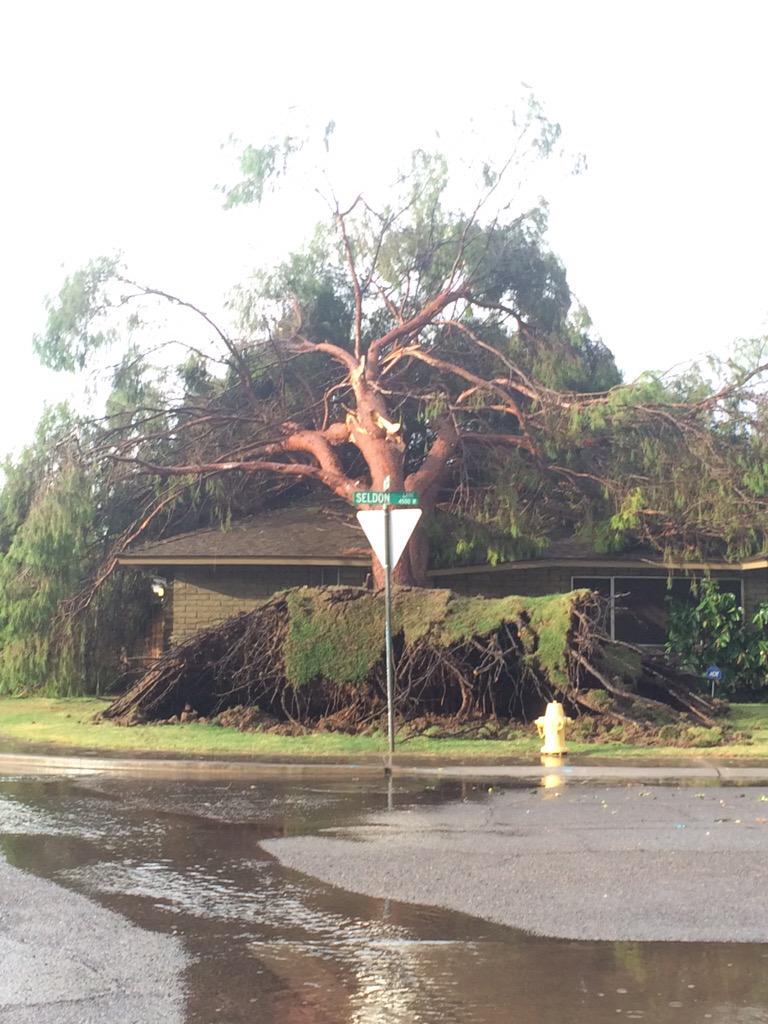 |
| (photo by AZ Central) | (photo by KNXV/ABC15) | (photo by KPNX/12News) |
The outflow boundaries created by these strong thunderstorms can result in winds 50 mph or greater, and very dense blowing dust generated over open fields and desert. On an active day, several outflow boundaries can interact with each other producing additional thunderstorm development, more outflows, and dust far removed the original source region. The most organized outflow boundaries can create huge walls of dust extending miles across and thousands of feet high. Even smaller and less organized dust events can be extremely hazardous to motorists as highway visibility can drop to only hundreds of feet in seconds.
 |
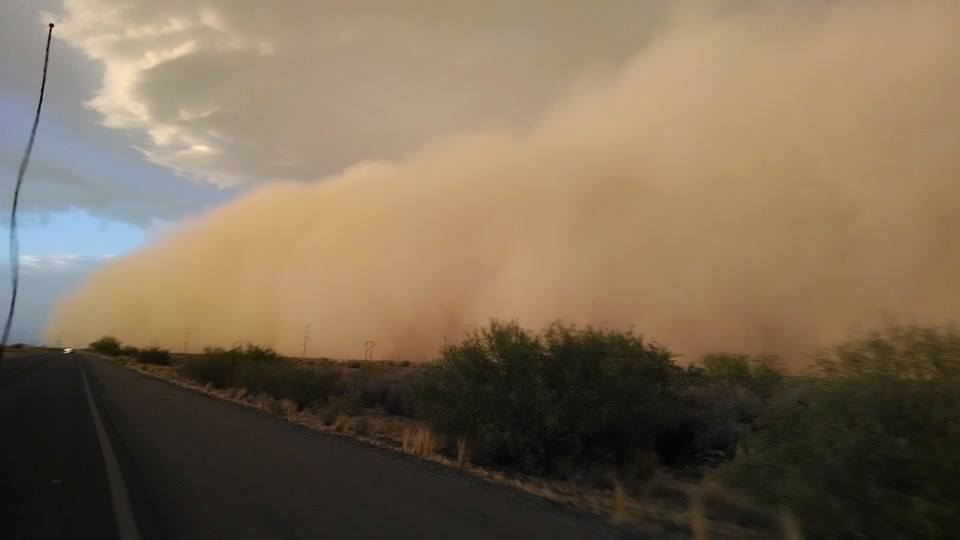 |
 |
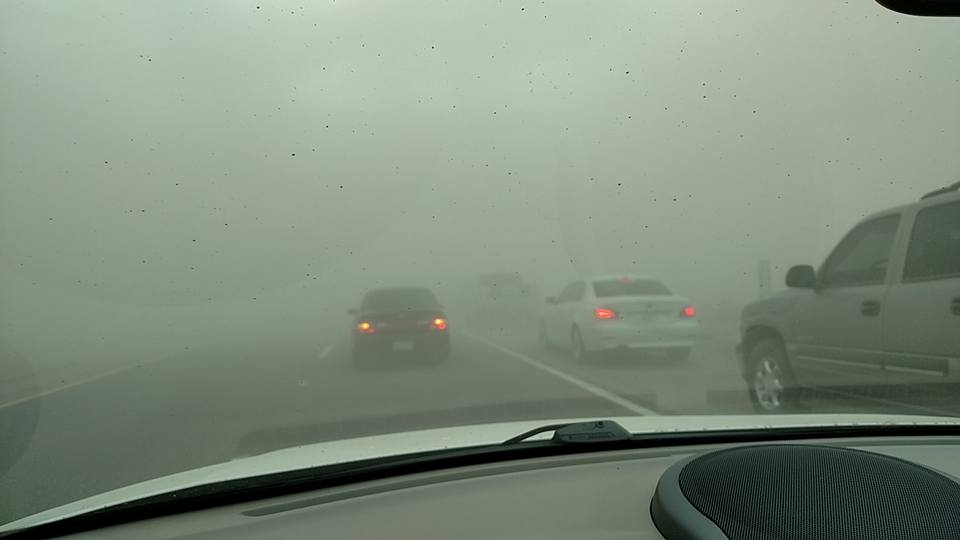 |
| (photo by Char Dewey/NWS) | (photo by Brandon Holloway) | (photo by Bryan Snider) | (photo by Deb Hansen) |
If you have any questions or comments, please contact:
Ken Waters
Warning Coordination Meteorologist
2727 E Washington St
PAB 1TA
Phoenix, AZ 85034
602-275-0073
Ken.Waters@noaa.gov
Be sure to visit Weather.gov/Phoenix to access official forecasts and warnings for south central and southwest Arizona.
 |
 |
 |
 |
 |

 Heat is the most deadly weather-related hazard in the United States with hundreds (if not over 1000) deaths per year - much greater than all other weather-related hazards. Just in the Phoenix metropolitan area alone, over 150 people have died each year for the past several years due to heat. The entire Southwest is especially susceptible to extreme heat with high temperatures commonly reaching above 110 degrees. In addition, during the monsoon, humidity levels increase leading to exceptionally warm evenings with low temperatures sometimes not dropping below 90 degrees.
Heat is the most deadly weather-related hazard in the United States with hundreds (if not over 1000) deaths per year - much greater than all other weather-related hazards. Just in the Phoenix metropolitan area alone, over 150 people have died each year for the past several years due to heat. The entire Southwest is especially susceptible to extreme heat with high temperatures commonly reaching above 110 degrees. In addition, during the monsoon, humidity levels increase leading to exceptionally warm evenings with low temperatures sometimes not dropping below 90 degrees.
| Key Number: 6000 - the number of Emergency Room visits in Arizona in 2016 due to heat |
The National Weather Service in Phoenix issues Excessive Heat Watches and Warnings during periods where the heat adversely affects people, and could become deadly if the proper precautions are not taken. During these periods of extreme heat, limit outdoor activities, drink plenty of water, and seek air conditioning if possible. Regularly check on relatives, friends, and neighbors who may not have access to air conditioning, or may be reluctant to use air conditioning for financial reasons.
The National Weather Service has embarked on an Experimental Heat Risk forecast tailored towards categories of heat and risk to public health.

https://www.wrh.noaa.gov/wrh/heatrisk/
For more information on heat safety see:
https://www.weather.gov/psr/HeatSafety
If you have any questions or comments, please contact:
Ken Waters
Warning Coordination Meteorologist
2727 E Washington St
PAB 1TA
Phoenix, AZ 85034
602-275-0073
Ken.Waters@noaa.gov
Be sure to visit Weather.gov/Phoenix to access official forecasts and warnings for south central and southwest Arizona.
 |
 |
 |
 |
 |
The purpose of this web page is to promote awareness of life-threatening and damaging weather hazards affecting Arizona and its residents during the North American Monsoon. Our "monsoon season" officially extends from June 15th through September 30th, the time during which associated hazards are most likely to occur.
Throughout the monsoon season, the Phoenix National Weather Service office will occasionally issue Watches and Warnings. As a rule, a Watch means "Get Ready - A weather event could happen that might impact your daily routine". A Warning means "Take Action - A weather event is occurring, or about to occur that will affect you". Here are some general guidelines provided originally by our colleagues that NWS Fort Worth.

 |
Be sure to have a Family Safety Plan before severe weather strikes
|
 |
There are many places to begin your Family Safety Plan that best suits your needs
|
 |
Many state websites also have guides to start you Family Safety Plan
|
 |
The key is to have a Family Safety Plan, review and practice this plan in case of a real emergency
|
 |
 |
 |
 |
 |
National Weather Service Phoenix Home page
Phoenix Dewpoint Traces
|
2017 |
2016 |
|
2015 |
2014 |
|
2013 |
2012 |
Additional Phoenix Dewpoint Information
 |
 |
 |
 |
 |